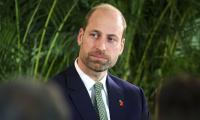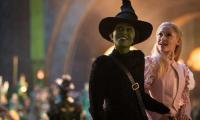Part - II
The PPP was formed in a period of intense ideological, political and class struggle in the country. The dominant political trend within the party – till 1973 – was radical leftwing, socialist and reformist.
The PPP introduced a series of economic and social reforms between 1972 and 1974. Between 1973 and1975, Islamic socialists and the reformist left dominated the party. The party started to move gradually towards rightwing policies from 1975 onward. While the PPP regime remained largely secular, progressive and anti-imperialist, its move towards the right continued until the 1977 elections. The party even deleted ‘socialism’ from the election manifesto of 1977 to appease right-wing voters and leaders.
In 1977, the PPP succumbed to the right-wing pressure. This didn’t mean, though, that it became the darling of the right wing. On the contrary, rightwing politicians and religious parties supported and financed by industrialists, petty capitalists, reactionary feudal lords and traders stung by Bhutto’s socialist policies became even more vehemently opposed to the PPP regime. However, by then, the party had all but alienated its leftist support base. Leftist workers, youth, intellectuals, activists and students were disillusioned and thus left the party. But the party was still popular enough to comfortably win a second term.
But Gen Zia toppled the PPP government and imposed a most repressive and reactionary dictatorship. He orchestrated a flawed trial and subsequently hanged the country’s first democratically elected prime minister, Z A Bhutto. The military regime did everything possible to destroy the PPP, but failed. The military intervention also cut across the right-wing move of the party, whose top leadership was either in prison or forced to go into exile.
Begum Nusrat Bhutto and young Benazir Bhutto led the struggle against the military dictatorship. This struggle once again radicalised the party. With no chance of an election in sight, and up against a stubborn and violent military dictatorship that was reaping the benefits of international support due to the Soviet occupation of Afghanistan, the PPP’s leadership largely fell into the hands of young radicals and old guard of the party. Radical left-wing liberals and democrats within the party’s second and third tiers were at the forefront of the resistance against the Zia dictatorship. New leaders emerged in the party on every level; and party workers and leaders sacrificed a lot during this struggle.
Benazir Bhutto stamped her authority on the party during this struggle, becoming an icon of democracy and resistance. The PPP went through many highs and lows under her charismatic and courageous leadership. But the party once again moved to the right after the collapse of the Soviet Union and the right-wing turn of social democratic parties. Capitalists, big landlords and the right-wing petty bourgeoisie gradually became the dominating force in the party. Benazir Bhutto, though, still managed to maintain a certain degree of charisma and popular support among the toiling masses.
The PPP abandoned its radical past and socialist policies, and embraced the ideas of the market economy and neo-liberalism. Benazir adopted these economic policies, but never brutally implemented them. Under her leadership, the PPP was a social-democratic party with Pakistani characteristics; the party was never a social-democratic party in the European sense. This was a popular trend that emerged in many former colonised countries in the 1960s and 1970s.
The tragic assassination of Benazir Bhutto in 2007 left the party without a popular and charismatic leadership. Her husband – and current co-chairperson of the party – Asif Zardari is not associated with any particular ideology. He is a pragmatist and strongly believes in power politics. Although he successfully completed his term, he lost popular support in Punjab – from which the PPP hasn’t recovered. Asif Zardari might be a clever and intelligent politician as far as power politics is concerned but he seems clueless and visionless when it comes to ideology. He has converted the PPP into a party of feudal lords in rural Sindh, which seems to only be interested in protecting the interests of a handful of people. I have no words to explain the present ideology of the party. I am not sure one can call it a centre-left or left-liberal party. The party is dominated by right-wing conservative pragmatic leaders belonging to the ruling classes. The present party is not even a shadow of its past.
There are only two trends in the party at the moment. One is the right-wing conservative pragmatic trend led by Asif Zardari, while the other is the liberal left or left-reformist democrats who are around Bilawal Bhutto. The liberal left is very weak and not yet in a position to challenge the hegemony of right-wing domination and to take the party towards a reformist and progressive direction. Asif Zardari is not in the mood to give a free hand to young and energetic Bilawal to lead the party on popular and radical slogans and programmes. Father and son made contrasting speeches at the Islamabad public gathering to celebrate the 50th founding day. Asif Zardari is a boring speaker without any substance and appeal. On the contrary, Bilawal has the charisma, passion and appeal to enthuse the audience. But he still lacks clarity. While he repeatedly declares he will make Pakistan a social-democratic society, he has not yet elaborated his exact position.
Bilawal Bhutto has a choice. He can choose the road of radical reformism in the footsteps of Jeremy Corbyn and Bernie Sanders to challenge the political hegemony of the elite and the establishment, and to oppose a free-market economic agenda. Or he can stay stuck to the present policies of appeasement and collaboration. The choice is between the politics of change and the politics of the status quo. He needs to choose sides now.
Concluded
The writer is a freelance journalist.
Report assesses readiness of over 190 countries to meet demands of the international job market
In Pakistan, prospect of introducing Starlink has been topic of discussion, particularly due to frequent internet...
Experts and stakeholders contend that privatisation could effectively address persistent inefficiencies
While it augurs well that need for regulation is being recognised and implemented
Disturbances that began in 2023 with attack on school have escalated rapidly in recent weeks
Obvious ineptness and lack of empathy that underpins our criminal justice system need not be recounted







